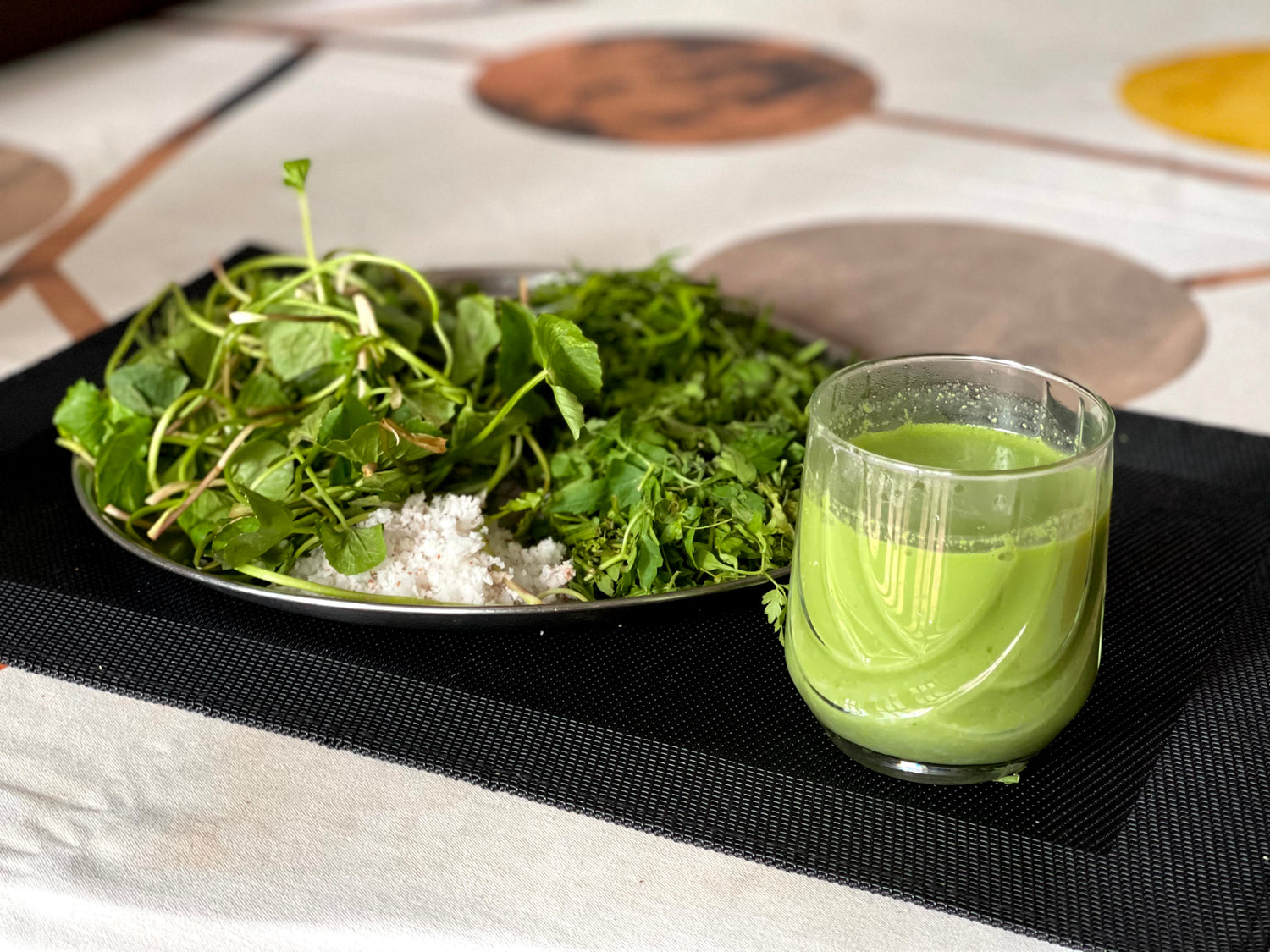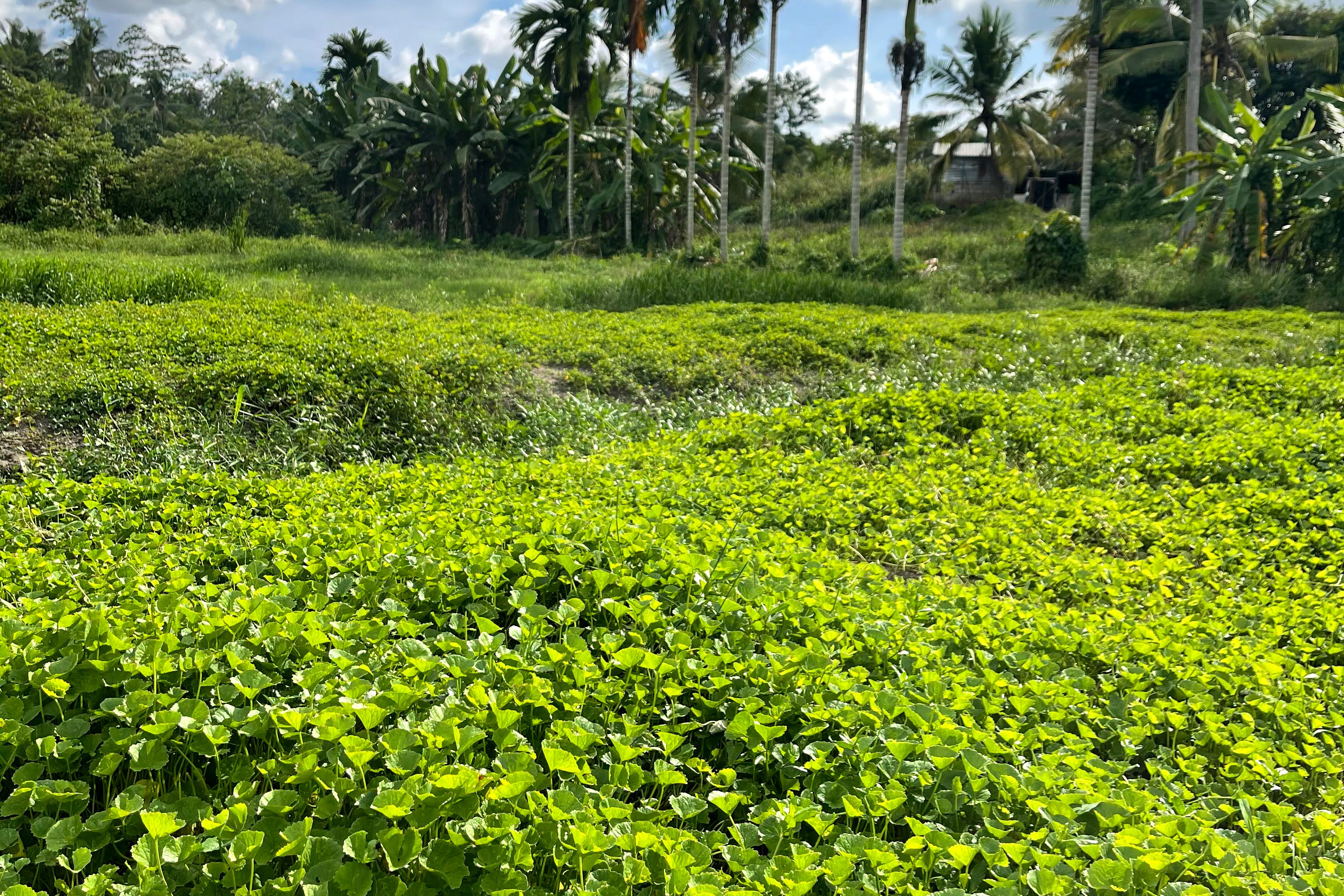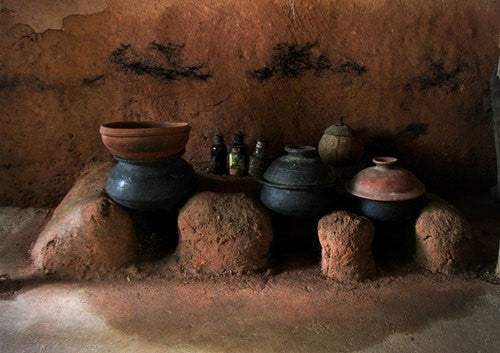
Prized for its many medicinal applications — including anxiety relief, improved cognitive function, wound healing, and more — the Gotu kola plant also has a time-honored place in the Sri Lankan kitchen.
One of those places is in Kola Kanda. Like Chinese congee or Filipino arroz caldo, the Sri Lankan classic is a rice porridge. Typically served at breakfast, Kola Kanda comprises rice cooked in coconut milk with the juices from Gotu kola leaves, added for their healing properties. While congee and arroz caldo are often a light color, the Gotu kola juice turns Kola Kanda a deep, grassy green and imparts a bitter flavor. To offset that bitterness, the herbal porridge often comes with a piece of palm sugar.
The History of Kola Kanda
According to the Dīpavaṃsa, which is the oldest recorded account of the history of present-day Sri Lanka and literally translates to “Chronicle of the Island,” people have enjoyed Kola Kanda for centuries. The dish originated in Buddhist monastic code as a restorative meal in the morning after a period of fasting in the evening, as Buddhist monks are only permitted to eat breakfast and lunch.
Kola Kanda provided the nourishment the monks needed after going without food for more than 12 hours, and the bitter, rejuvenating porridge is still a staple in Sri Lanka today.
How We Developed the Super Green Latte

Founder of Kola Goodies Sajani Amarasiri inherited her Kola Kanda recipe from her Amma — her mother — who is Sajani’s biggest inspiration. This heirloom recipe had everything Sajani knew could help people in the United States, like sustained energy, mental reinvigoration, and a digestive boost. Sajani, however, wanted to tailor the recipe to seamlessly fit into modern lifestyles. While traditional Kola Kanda requires a significant investment of time and energy to make, she developed the Super Green Latte to embody all the goodness of Kola Kanda that only takes a fraction of the time to prepare.
To achieve the transformation, Sajani adds moringa, which lends a slight sweetness as well as a bounty of nutrients stored in its leaves that help with cancer prevention, reduced blood pressure, and anti-inflammatory properties. Ceylon cinnamon and oat milk round out Sajani’s modern take on an ancient beverage, tailored to feel as good as it tastes.
An Evolution of Culture

Given Kola Kanda’s compelling flavors and wide array of health benefits, it's easy to understand why Sri Lankans have enjoyed this dish for centuries. Kola Goodies’ mission is to connect people to the culture and farmers of Sri Lanka, and reinterpreting a family recipe as the Super Green Latte is one method of achieving this goal. As a result, one of Sri Lanka’s ancient customs has evolved to proliferate in present culture. It is Sajani’s way of sharing one of the best parts of Sri Lankan culture with Americans: feeling good both inside and out.
But what does feeling good inside and out really mean?
For Kola Goodies, it means knowing where every fresh-AF ingredient comes from, paying farmers fairly for their crops, offering sustained energy and mental clarity, and crafting a delicious beverage with deep roots.




Leave a comment
This site is protected by hCaptcha and the hCaptcha Privacy Policy and Terms of Service apply.